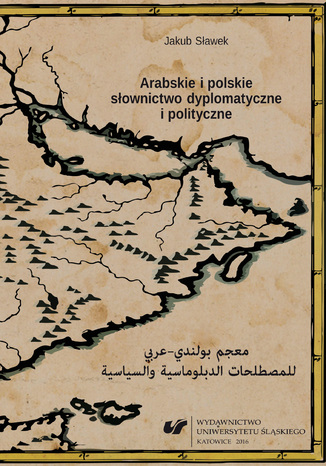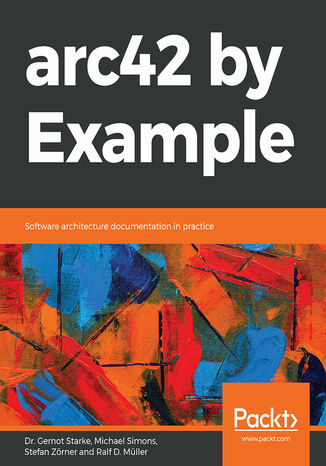Категорії
Електронні книги
-
Бізнес та економіка
- Біткойн
- Ділова жінка
- Коучинг
- Контроль
- Електронний бізнес
- Економіка
- Фінанси
- Фондова біржа та інвестиції
- Особисті компетенції
- Комп'ютер в офісі
- Комунікація та переговори
- Малий бізнес
- Маркетинг
- Мотивація
- Мультимедійне навчання
- Нерухомість
- Переконання та НЛП
- Податки
- Соціальна політика
- Порадники
- Презентації
- Лідерство
- Зв'язки з громадськістю
- Звіти, аналізи
- Секрет
- Соціальні засоби комунікації
- Продаж
- Стартап
- Ваша кар'єра
- Управління
- Управління проектами
- Людські ресурси (HR)
-
Для дітей
-
Для молоді
-
Освіта
-
Енциклопедії, словники
-
Електронна преса
- Architektura i wnętrza
- Безпека життєдіяльності
- Biznes i Ekonomia
- Будинок та сад
- Електронний бізнес
- Ekonomia i finanse
- Езотерика
- Фінанси
- Особисті фінанси
- Бізнес
- Фотографія
- Інформатика
- Відділ кадрів та оплата праці
- Для жінок
- Комп'ютери, Excel
- Бухгалтерія
- Культура та література
- Наукові та академічні
- Охорона навколишнього середовища
- Впливові
- Освіта
- Податки
- Подорожі
- Психологія
- Релігія
- Сільське господарство
- Ринок книг і преси
- Транспорт та спедиція
- Здоров'я та краса
-
Історія
-
Інформатика
- Офісні застосунки
- Бази даних
- Біоінформатика
- Бізнес ІТ
- CAD/CAM
- Digital Lifestyle
- DTP
- Електроніка
- Цифрова фотографія
- Комп'ютерна графіка
- Ігри
- Хакування
- Hardware
- IT w ekonomii
- Наукові пакети
- Шкільні підручники
- Основи комп'ютера
- Програмування
- Мобільне програмування
- Інтернет-сервери
- Комп'ютерні мережі
- Стартап
- Операційні системи
- Штучний інтелект
- Технологія для дітей
- Вебмайстерність
-
Інше
-
Іноземні мови
-
Культура та мистецтво
-
Шкільні читанки
-
Література
- Антології
- Балада
- Біографії та автобіографії
- Для дорослих
- Драми
- Журнали, щоденники, листи
- Епос, епопея
- Нарис
- Наукова фантастика та фантастика
- Фельєтони
- Художня література
- Гумор, сатира
- Інше
- Класичний
- Кримінальний роман
- Нехудожня література
- Художня література
- Mity i legendy
- Лауреати Нобелівської премії
- Новели
- Побутовий роман
- Okultyzm i magia
- Оповідання
- Спогади
- Подорожі
- Оповідна поезія
- Поезія
- Політика
- Науково-популярна
- Роман
- Історичний роман
- Проза
- Пригодницька
- Журналістика
- Роман-репортаж
- Romans i literatura obyczajowa
- Сенсація
- Трилер, жах
- Інтерв'ю та спогади
-
Природничі науки
-
Соціальні науки
-
Шкільні підручники
-
Науково-популярна та академічна
- Археологія
- Bibliotekoznawstwo
- Кінознавство / Теорія кіно
- Філологія
- Польська філологія
- Філософія
- Finanse i bankowość
- Географія
- Економіка
- Торгівля. Світова економіка
- Історія та археологія
- Історія мистецтва і архітектури
- Культурологія
- Мовознавство
- літературні студії
- Логістика
- Математика
- Ліки
- Гуманітарні науки
- Педагогіка
- Навчальні засоби
- Науково-популярна
- Інше
- Психологія
- Соціологія
- Театральні студії
- Богослов’я
- Економічні теорії та науки
- Transport i spedycja
- Фізичне виховання
- Zarządzanie i marketing
-
Порадники
-
Ігрові посібники
-
Професійні та спеціальні порадники
-
Юридична
- Безпека життєдіяльності
- Історія
- Дорожній кодекс. Водійські права
- Юридичні науки
- Охорона здоров'я
- Загальне, компендіум
- Академічні підручники
- Інше
- Закон про будівництво і житло
- Цивільне право
- Фінансове право
- Господарське право
- Господарське та комерційне право
- Кримінальний закон
- Кримінальне право. Кримінальні злочини. Кримінологія
- Міжнародне право
- Міжнародне та іноземне право
- Закон про охорону здоров'я
- Закон про освіту
- Податкове право
- Трудове право та законодавство про соціальне забезпечення
- Громадське, конституційне та адміністративне право
- Кодекс про шлюб і сім'ю
- Аграрне право
- Соціальне право, трудове право
- Законодавство Євросоюзу
- Промисловість
- Сільське господарство та захист навколишнього середовища
- Словники та енциклопедії
- Державні закупівлі
- Управління
-
Путівники та подорожі
- Африка
- Альбоми
- Південна Америка
- Центральна та Північна Америка
- Австралія, Нова Зеландія, Океанія
- Австрія
- Азії
- Балкани
- Близький Схід
- Болгарія
- Китай
- Хорватія
- Чеська Республіка
- Данія
- Єгипет
- Естонія
- Європа
- Франція
- Гори
- Греція
- Іспанія
- Нідерланди
- Ісландія
- Литва
- Латвія
- Mapy, Plany miast, Atlasy
- Мініпутівники
- Німеччина
- Норвегія
- Активні подорожі
- Польща
- Португалія
- Інше
- Przewodniki po hotelach i restauracjach
- Росія
- Румунія
- Словаччина
- Словенія
- Швейцарія
- Швеція
- Світ
- Туреччина
- Україна
- Угорщина
- Велика Британія
- Італія
-
Психологія
- Філософія життя
- Kompetencje psychospołeczne
- Міжособистісне спілкування
- Mindfulness
- Загальне
- Переконання та НЛП
- Академічна психологія
- Психологія душі та розуму
- Психологія праці
- Relacje i związki
- Батьківство та дитяча психологія
- Вирішення проблем
- Інтелектуальний розвиток
- Секрет
- Сексуальність
- Спокушання
- Зовнішній вигляд та імідж
- Філософія життя
-
Релігія
-
Спорт, фітнес, дієти
-
Техніка і механіка
Аудіокниги
-
Бізнес та економіка
- Біткойн
- Ділова жінка
- Коучинг
- Контроль
- Електронний бізнес
- Економіка
- Фінанси
- Фондова біржа та інвестиції
- Особисті компетенції
- Комунікація та переговори
- Малий бізнес
- Маркетинг
- Мотивація
- Нерухомість
- Переконання та НЛП
- Податки
- Соціальна політика
- Порадники
- Презентації
- Лідерство
- Зв'язки з громадськістю
- Секрет
- Соціальні засоби комунікації
- Продаж
- Стартап
- Ваша кар'єра
- Управління
- Управління проектами
- Людські ресурси (HR)
-
Для дітей
-
Для молоді
-
Освіта
-
Енциклопедії, словники
-
Електронна преса
-
Історія
-
Інформатика
-
Інше
-
Іноземні мови
-
Культура та мистецтво
-
Шкільні читанки
-
Література
- Антології
- Балада
- Біографії та автобіографії
- Для дорослих
- Драми
- Журнали, щоденники, листи
- Епос, епопея
- Нарис
- Наукова фантастика та фантастика
- Фельєтони
- Художня література
- Гумор, сатира
- Інше
- Класичний
- Кримінальний роман
- Нехудожня література
- Художня література
- Mity i legendy
- Лауреати Нобелівської премії
- Новели
- Побутовий роман
- Okultyzm i magia
- Оповідання
- Спогади
- Подорожі
- Поезія
- Політика
- Науково-популярна
- Роман
- Історичний роман
- Проза
- Пригодницька
- Журналістика
- Роман-репортаж
- Romans i literatura obyczajowa
- Сенсація
- Трилер, жах
- Інтерв'ю та спогади
-
Природничі науки
-
Соціальні науки
-
Науково-популярна та академічна
-
Порадники
-
Професійні та спеціальні порадники
-
Юридична
-
Путівники та подорожі
-
Психологія
- Філософія життя
- Міжособистісне спілкування
- Mindfulness
- Загальне
- Переконання та НЛП
- Академічна психологія
- Психологія душі та розуму
- Психологія праці
- Relacje i związki
- Батьківство та дитяча психологія
- Вирішення проблем
- Інтелектуальний розвиток
- Секрет
- Сексуальність
- Спокушання
- Зовнішній вигляд та імідж
- Філософія життя
-
Релігія
-
Спорт, фітнес, дієти
-
Техніка і механіка
Відеокурси
-
Бази даних
-
Big Data
-
Biznes, ekonomia i marketing
-
Кібербезпека
-
Data Science
-
DevOps
-
Для дітей
-
Електроніка
-
Графіка / Відео / CAX
-
Ігри
-
Microsoft Office
-
Інструменти розробки
-
Програмування
-
Особистісний розвиток
-
Комп'ютерні мережі
-
Операційні системи
-
Тестування програмного забезпечення
-
Мобільні пристрої
-
UX/UI
-
Веброзробка, Web development
-
Управління
Подкасти
Arabska droga cierniowa. Dziennik 2011-2013
Arabska droga cierniowa to książka o arabskiej Pasji, z całym bogactwem dwuznaczności kryjących się w tym pojęciu. Zestawiając obserwacje z podróży w latach 20112013 z doświadczeniami trzech dekad spędzonych na przemierzaniu południowych i wschodnich brzegów Morza Śródziemnego, autor przedstawia w niej dwa pierwsze etapy tego gigantycznego ruchu. Stwierdza, że trzy lata po wybuchu tamtejszych rewolucji męczeński wymiar tego zjawiska zgasił panujący na początku entuzjazm. Stawia zatem pytania: Co zostało z idei porywających ludzi zgromadzonych na placu Tahrir czy lavenue Bourghiba? Czy ofiara Mohameda Bouaziziego w Sidi Bu Zajdzie, która doprowadziła do wybuchu w państwach arabskich, została poniesiona na próżno? Wiosną 2014 roku młodzi rewolucjoniści z egipskiej wiosny 2011 mają kłopot z odpowiedzią na te pytania; część z nich jest zakłopotana, bo nie ma już więzień, które opuścili po upadku Mubaraka. Po epizodzie z władzą Braci Muzułmanów, uznanym przez większość za zdradę, któremu towarzyszył chaos społeczny, przemoc w miastach, gwałty, kradzieże, postępujące ubóstwo i przestępczość, przejęcie władzy przez wojskowych, sprawujących rzeczywistą kontrolę za fasadą rządów cywilnych, zapewniło dowództwu pewną popularność. Wydaje się, że u zmęczonej zamieszaniem ludności dążenie do bezpieczeństwa wzięło górę nad ideałami wolności i demokracji, co trzy lata wcześniej wydawało się niemożliwe. Jednak według największych optymistów nic już nie będzie takie jak przedtem; mimo fatalnego przebiegu wydarzeń duch rewolucyjny głęboko przeniknął narody arabskie. Zobaczymy, co przyniesie czas. Obserwujemy wszak powstawanie silnych ruchów artystycznych, co wczorajszym rewolucjonistom w pewien sposób kompensuje zamknięcie przestrzeni politycznej. Odnajdują się w tym działaniu ci, którzy dzisiaj mają zakaz wstępu na plac Tahrir. Być może właśnie teraz stawia swoje pierwsze kroki rewolucja kulturowa, jednak musi przejść jeszcze daleką drogę, zanim pojawi się znowu jako prawdziwa rewolucja polityczna.
Jak świat światem, podczas wojny, czy zarazy, ludzie zakochiwali się w sobie i czerpali z życia pełnymi garściami. Kiedy nie wiadomo, czy za chwilę będziemy zdrowi i żywi, oddajemy się uczuciom, dzięki którym zapominamy o otaczającym nas złu. Tak też robią bohaterowie "Arabskiej kochanki", powieści, której akcja toczy się na Bliskim Wschodzie - w Królestwie Arabii Saudyjskiej i w Izraelu - w czasach przeklętej przez wszystkich pandemii COVID-19. Jakie są arabskie kochanki? Czy każda jest gorąca jak wulkan i piękna jak koraniczna, rajska hurysa? Czy Marysia Salimi zalicza się do tych niezwykłych kobiet? Czy znów zejdzie się z byłym mężem, milionerem Hamidem Binladenem, a może definitywnie oddała serce innemu? Czy Izraelczyk Jakub Goldman jest jej wart i czy zapragnie tak zwariowanej kobiety? A szara myszka Daria Salimi? Oczyści się z ciężkich zarzutów i urządzi sobie życie? Potrafi jeszcze kogoś pokochać? Może odnajdzie swą młodzieńczą miłość i będzie jednak szczęśliwa? Co słychać u Doroty, protoplastki rodu i matki tych dwóch nieustannie sprawiających kłopoty dorosłych córek? Czy sprosta wymaganiom męża, doktora al-Ridy, który jako minister zdrowia ma na głowie pandemię w Królestwie Arabii Saudyjskiej? Czy jakaś arabska kochanica nie wkradnie się w jego łaski? Nadia Binladen, córka Marysi i wnuczka Doroty, to już nie dziecko, ale atrakcyjna pannica, a to niesie swoje konsekwencje. Wielbiciele sagi spotkają w "Arabskiej kochance" całą rodzinę Salimich w towarzystwie nowych postaci. Zapraszam również nowych Czytelników do rozpoczęcia przygody z Orientalną serią, gdyż każdą część sagi można czytać bez znajomości poprzednich, kolejne tomy stanowią bowiem zamknięte całości. Tanya Valko Tanya Valko to pseudonim absolwentki Uniwersytetu Jagiellońskiego. Była nauczycielką w Szkole Polskiej w Libii, a następnie przez prawie dwadzieścia lat asystentką Ambasadorów RP. Mieszkała m.in. w Libii, Arabii Saudyjskiej i Indonezji. Po ponad dwudziestu pięciu latach na obczyźnie w 2018 r. zostawiła za sobą dyplomatyczne życie i wróciła do Polski.
Kontynuacja bestsellerowych powieści Tanyi Valko: Arabska żona i Arabska córka. Historia miłosna w czasach współczesnej wojny. Autorka opisuje dalsze niezwykłe losy matki i jej córki. Przedstawia szarpane rewolucją kraje arabskie oczami Europejki, która próbuje zaaklimatyzować się w muzułmańskich realiach. Książka ukazuje okropieństwa wojny, pasje i uczucia, a przede wszystkim podłoże psychiczne ludzkich czynów w ekstremalnych sytuacjach. Obnaża okrucieństwo i bezwzględność tyrana wobec cierpienia zwykłych ludzi. Czy Dorota i Marysia po odnalezieniu się po latach w Arabii Saudyjskiej będą już zawsze razem? Czy ich związki są udane i czują się w nich spełnione? Jak zmieni się ich świat? Jak będzie wyglądała Libia po rewolucji? Czy o taki kraj walczyli powstańcy? Tanya Valko doskonale zna Libię i kraje muzułmańskie. I chociaż opisane wydarzenia są tylko fikcją literacką, zapewniam, że czyta się je z zapartym tchem. Magazyn Literacki KSIĄŻKI Tanya Valko to pseudonim absolwentki Uniwersytetu Jagiellońskiego. Była nauczycielką w Szkole Polskiej w Trypolisie w Libii, następnie asystentką Ambasadora RP, obecnie mieszka w Arabii Saudyjskiej. Jest autorką książek o Libii Libia od kuchni, Życie codzienne w Trypolisie oraz Sahara ocean ciszy. Jej zainteresowania zdrowym stylem życia zaowocowały książkami Dość odchudzania czas na dietę i Nowoczesna książka kucharska.
Arabska krucjata to kolejny tom Arabskiej sagi Tanyi Valko, pełen mrożących krew w żyłach sytuacji, miłosnych perypetii, skrajnych uczuć, bogactwa i ubóstwa. Bohaterowie po raz kolejny dowodzą, jak łatwo znaleźć się w złym miejscu o złej porze i jak ciężko później wybrnąć z kłopotów. Jak żyją niewinni mieszkańcy krajów arabskich, wyniszczani przez własnych braci? Co czują zwykli Damasceńczycy w czasach, którymi rządzą strach i paranoja? Czy marzą o ucieczce i życiu na obczyźnie? Czy są w stanie opuścić swój dom? Jak Dorota, Marysia i Daria odnajdą się we współczesnym świecie, opanowanym przez islamski fundamentalizm? Czy Hamid Bin Laden, wojujący z dżihadystami, będzie odpowiednim partnerem dla Marysi? Czy ich losy znów się połączą? Czy miłość może być aż tak ślepa, by kobieta wpadła w ręce groźnego terrorysty, nie zdając sobie z tego sprawy? W co tym razem wplącze się Marysia? Czy Dorota jest bezpieczna i obojętna na to, co się dzieje wokół niej? Czy młoda Daria dołączy do klubu złamanych serc rodu Salimich? Tanya Valko to pseudonim absolwentki Uniwersytetu Jagiellońskiego. Była nauczycielką w Szkole Polskiej w Libii, a następnie długoletnią asystentką ambasadorów RP. Przez ponad dwadzieścia lat mieszkała w krajach arabskich, w tym w Arabii Saudyjskiej i Indonezji. Jest autorką bestsellerowej Arabskiej sagi, na którą złożyły się tomy: Arabska żona, Arabska córka, Arabska krew i Arabska księżniczka. Sukces sagi skłonił autorkę do rozpoczęcia następnego cyklu powieściowego pod zbiorczym tytułem Azjatycka saga (Okruchy raju, Miłość na Bali). Nowa książka jest kontynuacją pierwszej serii.
Kontynuacja bestsellerowych powieści Tanyi Valko: Arabska żona, Arabska córka i Arabska krew. Arabska księżniczka to powieść zgłębiająca tajniki ludzkiej natury, uwarunkowane muzułmańskim prawem szarijatu, to wstrząsający opis przemocy, mordów i gwałtów, ale też książka ukazująca prawdziwe życie w arabskim kraju. Autorka opisuje dalsze koleje życia Doroty Polki, która w młodości poślubiła Libijczyka, oraz jej dorosłej córki, która sama staje się matką Nadii. Tym razem ich dzieje łączą się z zawikłanymi losami saudyjskiej księżniczki Lamii. Kraj arabski zostaje przedstawiony nie tylko oczami Europejek, ale również rodowitych mieszkanek. Książka ukazuje próby emancypacji arabskich kobiet i znalezienia przez nie miejsca dla siebie w kraju mężczyzn. Tanya Valko opisuje okrucieństwo, pasje i uczucia oraz podłoże psychologiczne ludzkich czynów. Czy Dorota i Marysia są szczęśliwe w Arabii Saudyjskiej? Czy mają możliwość spełnienia się? Jak przeszłość wpływa na ich codzienne życie? Czy mała Nadia jest kochanym dzieckiem? Dlaczego opływająca w bogactwo księżniczka postępuje tak, a nie inaczej? Odpowiedzi na te i wiele innych pytań można odnaleźć na kartach powieści Arabska księżniczka. Tanya Valko to pseudonim absolwentki Uniwersytetu Jagiellońskiego. Była nauczycielką w Szkole Polskiej w Libii, następnie długoletnią asystentką Ambasadorów RP. Przez pięć lat mieszkała w Arabii Saudyjskiej, a obecnie w Indonezji. Jest autorką książek o Libii: Libia od kuchni, Życie codzienne w Trypolisie oraz Sahara ocean ciszy. Jej zainteresowania zdrowym stylem życia zaowocowały książkami Dość odchudzania czas na dietę i Nowoczesna książka kucharska. W 2010 r. ukazał się jej debiut powieściowy Arabska żona, który okazał się bestsellerem oraz początkiem arabskiej sagi. Arabska córka, Arabska krew i Arabska księżniczka to kontynuacja tej powieści.
Arabska ofiara. Arabska saga. Tom 14
Tanya Valko Arabska ofiara Kolejny tom Arabskiej sagi, przygód szalonych i nieprzewidywalnych kobiet z rodu Salimich oraz Goldmanów. Większa część arabskiej familii przeprowadza się z Rijadu do Izraela. Śledząc losy Nadii i Palestyńczyka Mabruka, oraz innych mieszkańców Tel Awiwu, poznajemy, co to strach i lęk, gdy kassamy lecą nad głowami, a Żelazna Kopuła nie wszystkie wychwytuje. Daria Salimi i ambasador Hamid Binladen otwierają pierwszą saudyjską placówkę w Tel Awiwie. Czy prowadząca prywatne śledztwo Dorota dowie się czegoś konkretnego o życiu robotników i azjatyckiej służby domowej w Katarze? Tłem powieści jest wielka światowa polityka. Jak odległa europejska batalia wpłynie na losy Saudyjczyków i powieściowych bohaterów? I czy saudyjski szpieg jest w stanie odmienić bieg okrutnej wojny Putina? Autorka jak zwykle ubiera prawdziwe wydarzenia w literacką fikcję. W powieści, tak jak w życiu, smutek przeplata się z radością, dramatyczne sytuacje okraszone są charakterystycznym dla autorki poczuciem humoru, a akcja ani na chwilę nie traci tempa. Arabska ofiara to już szesnasta część orientalnej sagi i jak wszystkie pozostałe można ją czytać niezależnie, gdyż stanowi zamkniętą całość.
Czy tylko terrorysta Jasem Alzani kieruje się starą biblijną i koraniczną zasadą "oko za oko, ząb za ząb"? Czy pragnienie zemsty nie tkwi w każdym z nas? Daria Salimi vel Darin al-Saud zostawia za sobą praworządny świat, bo pomsta za zmarnowane lata i krzywdy staje się celem jej życia, Marysia zaś w głębi ducha pragnie zemścić się na swojej rywalce Salmie, która odebrała jej życiowego partnera, Hamida Binladena. Czy pandemia COVID-19 ogarnie też arabski świat, zagrozi członkom rodziny Salimich, rozprawi się z ich wrogami, ale czy nie zagrozi tym, których kochają? Akcja najnowszej powieści toczy się nie tylko w Libii i Arabii Saudyjskiej, ale także na włoskiej wyspie Lampedusa, w Mediolanie, na Gran Canarii, w Maroku i na Saharze. "Arabska wendeta", jak wszystkie książki Tanyi Valko, wzbudza gorące emocje i trzyma w napięciu do ostatniej strony. Tanya Valko to pseudonim absolwentki Uniwersytetu Jagiellońskiego. Była nauczycielką w Szkole Polskiej w Libii, a następnie przez prawie 20 lat asystentką ambasadorów RP. Mieszkała w krajach arabskich, w tym w Libii i Arabii Saudyjskiej, a następnie w Indonezji. W 2018 roku - po ponad 25 latach spędzonych na obczyźnie - pozostawiła za sobą dyplomatyczne życie i wróciła do Polski. Na jak długo, czas pokaże.
Arabska wiosna i świat arabski u progu XXI wieku
Marek M. Dziekan, Krzysztof Zdulski, Radosław Bania
Od protestów społecznych i konfliktów zbrojnych w latach 2010-2012, które w dziejach zapisały się pod nazwą Arabskiej Wiosny, dzieli nas niespełna dekada. Dystans kilku lat, jakie upłynęły od rozpoczęcia tych zdarzeń, pozwala na przedstawienie ich przyczyn oraz określenie konsekwencji. Jak przebiegały wydarzenia Arabskiej Wiosny w Tunezji, Egipcie, Libii i innych państwach regionu? Jaką rolę w tych procesach odegrały Unia Europejska, Rosja i Stany Zjednoczone? Co doprowadziło do kryzysu imigracyjnego i wzrostu zagrożenia terrorystycznego w Europie? Stałym elementem sytuacji politycznej na Bliskim Wschodzie jest nieprzewidywalność. Konflikty lokalne, panarabizm, wojna USA z terroryzmem, idea powstania tzw. Państwa Islamskiego, ale też rola literatury i kobiet w tytułowych wydarzeniach - to tylko niektóre zagadnienia tej wielowątkowej publikacji. Arabska Wiosna nie przyczyniła się do stabilizacji i demokratyzacji Bliskiego Wschodu, ale echa tych wydarzeń absorbują uwagę światowej opinii publicznej do dziś.
Arabska Wiosna. Kulturowy obraz przemian w świecie arabskim po 2010 roku
Nie minęło sześć lat od rozpoczęcia się burzliwych przemian społeczno-politycznych, określanych jako Arabska Wiosna Ludów, a Bliski Wschód i Afryka Północna zmieniły się nie do poznania. Tylko kilka państw pozostało względnie niewzruszonych Algieria i Maroko w Afryce Północnej oraz Katar, Oman i Zjednoczone Emiraty Arabskie na Półwyspie Arabskim. W pozostałych doszło do zasadniczych przeobrażeń i jakkolwiek je oceniać w zdecydowanej większości na gorsze. Arabska Wiosna nie przyniosła wprawdzie spełnienia postulatów politycznych i gospodarczych, ale pozostawiła po sobie spuściznę określonych postaw, idei i wytworów kultury. I to właśnie o tych świadectwach Arabskiej Wiosny traktuje niniejsza książka. Nie stanowi ona encyklopedycznego przeglądu wszystkich państw Bliskiego Wschodu i Afryki Północnej, ale raczej zbiór różnych ujęć i tematów, których wspólnym mianownikiem są przemiany kulturowe, jakie zaszły w regionie podczas Arabskiej Wiosny Ludów. Ze Wstępu, Katarzyna Górak-Sosnowska Kultura okazuje się równie podatna na wydarzenia polityczne, jak sama polityka. prof. Marek Dziekan Książka porusza arcyciekawe dla polskiego czytelnika zagadnienie rewolucji, wpływających na współczesną tożsamość społeczeństw. prof. Wiesław Godzic
To co w krajach Zachodu może nawet nie być przewinieniem, na Bliskim Wschodzie jest grzechem - przestępstwem, które można przypłacić głową. Zdradzenie kraju, rodu, religii czy tradycji bywa śmiertelnie groźne, o czym przekonuje się Warda Albasri, była kochanka męża Doroty, a obecnie jej lekarka i przyjaciółka. Czy flirtując z czyimś mężem, nie stajemy się zdrajczyniami kobiecego rodu, szczególnie gdy zdradzana żona jest śmiertelnie chora? Czy romansowanie w Arabii Saudyjskiej można uznać za sport ekstremalny, który grozi kalectwem lub utratą życia. Czy zbrodnia honorowa popełniana na muzułmańskich kobietach rzeczywiście jest honorowa? Wydaje się to absurdem. Akcja powieści toczy się w ortodoksyjnej Arabii Saudyjskiej, ogarniętym wojną domową i klęską humanitarną Jemenie, na terenie Izraela oraz Autonomii Palestyńskiej. Dorota musi zmagać się ze śmiertelną chorobą i zdradą doktor Wardy, która usiłuje odbić chorej na raka pacjentce męża. Czy Marysia Salimi będzie szczęśliwa ze swym nowym mężem, Izraelczykiem Jakubem Goldmanem? A może zatęskni do poprzedniego życia i pierwszej, wielkiej miłości, milionera Hamida Binladena, który obecnie jest mężem jej siostry Darii? Czy Daria Salimi nauczy się żyć w praworządnym świecie i odda serce Hamidowi? Czy ten związek ma szansę powodzenia? A może zechce zwrócić starszej siostrze jej zgubę? Co słychać u wkraczającej w dorosłość Nadii Binladen? Uda jej się zachować niewinność i uczciwość, czy zdradzi wpajane jej zasady i przekonania? Kobiety z rodu Goldmanów są równie nieprzewidywalne, co te z klanu Salimich, tak że Jente, Abigail i Dalia ciągle będą w centrum zawirowań i drastycznych zmian. "Arabska zdrajczyni" to kolejna część orientalnej sagi, lecz jak wszystkie pozostałe można ją czytać niezależnie, gdyż stanowi zamkniętą całość. Tanya Valko to pseudonim absolwentki Uniwersytetu Jagiellońskiego. Była nauczycielką w Szkole Polskiej w Libii, a następnie przez prawie 20 lat asystentką ambasadorów RP. Mieszkała w krajach arabskich, w tym w Libii i Arabii Saudyjskiej, a następnie w Indonezji. Po ponad 25 latach na obczyźnie, w 2018 roku zostawiła za sobą dyplomatyczne życie i wróciła do Polski.
Wstrząsająca historia Polki, która poślubiła muzułmanina. Kiedy Dorota, uczennica szkoły średniej, poznaje Ahmeda, zakochuje się w nim bez pamięci. Jej najbliższe otoczenie nie kryje swojego negatywnego nastawienia do tego związku, mimo to młodzi spotykają się dalej dziewczyna zachodzi w ciążę, w końcu biorą ślub. Po pewnym czasie wyjeżdżają do jego rodzinnej Libii. Tam ukochany pokazuje swoje prawdziwe oblicze - znika na całe dnie z domu, jest chorobliwie zazdrosny, nie stroni od rękoczynów. Dorota, zaślepiona miłością, nie zdaje sobie sprawy, że mąż jest zagrożeniem dla niej i jej córeczek. Orientuje się niestety, kiedy jest już za późno. "Arabska żona" to rezultat ponad dwudziestoletnich kontaktów pisarki z krajami muzułmańskimi, efekt studiów i badań, doświadczeń własnych oraz zasłyszanych opowieści. Autorka połączyła w tej powieści wiele ludzkich historii, które przetworzyła na fikcję literacką. Tanya Valko to pseudonim absolwentki Uniwersytetu Jagiellońskiego. Była nauczycielką w Szkole Polskiej w Trypolisie w Libii, następnie asystentką Ambasadora RP, obecnie mieszka w Arabii Saudyjskiej. Jest autorką książek o Libii: Libia od kuchni, Życie codzienne w Trypolisie oraz Sahara - ocean ciszy. Jej zainteresowania zdrowym stylem życia zaowocowały książkami: Dość odchudzania - czas na dietę i Nowoczesna książka kucharska. Arabska żona to jej debiut powieściowy.
Marysia Salimi, pół-Polka, pół-Libijka po rozwodzie z saudyjskim milionerem staje przed trudnym wyborem - załamać się i żyć w cieniu dawnego luksusu czy wziąć sprawy we własne ręce i zawalczyć o swoją przyszłość. W poszukiwaniu odpowiedzi trafia do Polski, gdzie poznaje swą babkę, która odkrywa przed nią nieznany wątek rodzinnej historii. Wypełniając jej ostatnią wolę Marysia trafia do Izraela i Autonomii Palestyńskiej. Poznaje blaski i cienie tej części Bliskiego Wschodu, podąża tropem skrywanych tajemnic, trafia w niebezpieczne miejsca i poznaje kontrowersyjne postacie. Nieodmiennie jednak ciąży nad nią przeszłość. Udajmy się wraz z bohaterką w nowy, nieznany i arcyciekawy świat. Tanya Valko to pseudonim absolwentki Uniwersytetu Jagiellońskiego. Była nauczycielką w Szkole Polskiej w Libii, a następnie przez prawie 20 lat asystentką Ambasadorów RP. Mieszkała w krajach arabskich, w tym w Libii i Arabii Saudyjskiej, a następnie w Indonezji. Po ponad 25 latach na obczyźnie w 2018 r. zostawiła za sobą dyplomatyczne życie i wróciła do Polski.
Czy można polubić życie w złotej klatce, tak że nie chce się jej opuścić i wrócić do M-5? Czy bogactwo i rutyna są silniejsze od naturalnego pragnienia wolności? Jak potoczą się losy kobiet z rodu Salimich - Doroty i jej dwóch córek: Marysi i Darii - oraz ich życiowych partnerów? Czy Dorota po życiowej zawierusze będzie mogła spokojnie cieszyć się szczęściem swojego stadła? Czy miłość Hamida i Marysi Binladenów okaże się wieczna? A może na ich krystalicznym związku pojawi się rysa? A Daria? Czy po latach spędzonych u boku zbrodniarza i terrorysty Jasema Alzaniego potrafi się od niego uwolnić i żyć w cywilizowanym świecie prawa? Do głosu dochodzi też młode pokolenie - Nadia Binladen i Adaś Nowicki. Czy wzorem starszych będą mieli skłonność do popełniania głupich błędów i wpadania w tarapaty? Jak zmienia się współczesny arabski świat? Co nowego w Arabii Saudyjskiej? Kontynuacja porywającej sagi arabskiej, która zbliża dwa z pozoru odległe światy. Tanya Valko to pseudonim absolwentki Uniwersytetu Jagiellońskiego. Była nauczycielką w Szkole Polskiej w Libii, a następnie przez prawie 20 lat - asystentką ambasadorów RP. Mieszkała w krajach arabskich, w tym w Libii i Arabii Saudyjskiej, a następnie w Indonezji. W 2018 roku - po ponad 25 latach spędzonych na obczyźnie - pozostawiła za sobą dyplomatyczne życie i wróciła do Polski. Na jak długo, czas pokaże.
Kontynuacja dotychczasowych powieści Tanyi Valko. Ulubieni bohaterowie powracają: Dorota, jej dwie córki Marysia i Daria oraz ich mężowie: Hamid Binladen, bojownik ze światowym terroryzmem, główny antagonista fundamentalisty dżihadiego Johna, życiowego partnera Darii. Tym razem śledzimy losy dwóch arabskich mężów, ludzi diametralnie różnych, których pokochały pół-Arabki. Nie będzie już wątpliwości, kto jest zły, a kto dobry. Jak radzą sobie europejskie kobiety w świecie ogarniętym krwawą wojną? Jak wygląda codzienność kalifatu, który powstał na terenach Syrii i Iraku? Jakie jest miejsce kobiety w Państwie Islamskim czy wszystkie są uciemiężone i pokrzywdzone, czy może niektóre popierają okrutny porządek, narzucony przez szalonych fundamentalistów? Czy Darii uda się uciec z piekła na ziemi? Czy dżihadi John, morderca i sadysta, a zarazem człowiek wybitnie inteligentny, ma jeszcze szansę zejść z przestępczej ścieżki? Czy Marysia i Hamid znów wyruszą na poszukiwania krewniaczki? I co na to wszystko Dorota? Dokąd zmierza nasz świat i czy to już jego koniec czy dopiero początek przemian? Tanya Valko to pseudonim absolwentki Uniwersytetu Jagiellońskiego. Była nauczycielką w Szkole Polskiej w Libii, a następnie długoletnią asystentką ambasadorów RP. Przez ponad dwadzieścia lat mieszkała w krajach arabskich, w tym w Libii i Arabii Saudyjskiej, a obecnie w największym kraju muzułmańskim na świecie Indonezji. Jest autorką bestsellerowej Arabskiej sagi, na którą złożyły się następujące tomy: Arabska żona, Arabska córka, Arabska krew i Arabska księżniczka. Sukces sagi skłonił autorkę do rozpoczęcia następnego cyklu powieściowego pod zbiorczym tytułem Azjatycka saga (Okruchy raju i Miłość na Bali), która jest kontynuacją losów bohaterów poprzedniego cyklu. Wydana w 2016 r. Arabska krucjata prowadzi nas z Azji do krajów arabskich, do Państwa Islamskiego i współczesnego kalifatu. Nowa książka jest kontynuacją całej orientalnej serii.
Dziesiąty tom bestsellerowej "Orientalnej sagi" jest kontynuacją losów Doroty, jej córek - Marysi-Miriam i Darii-Darin - oraz ich życiowych partnerów: Hamida Binladena i Jasema Alzaniego. To wstrząsająca historia Polki, która poślubiła Araba i Arabki, która pokochała Polaka. Słowianka znajduje swój mały eden w ortodoksyjnej wahabickiej bogatej Arabii Saudyjskiej i w pogrążonej w chaosie nieszczęsnej Libii, zaś muzułmanka swoją mekkę widzi w bezpiecznym kraju nad Wisłą. Zatem arabski raj to nie tylko koraniczna Dżenna (Ogród) z pięknymi hurysami, z rzekami płynącymi mlekiem, miodem i winem? Gdzie jeszcze można znaleźć prawdziwą krainę szczęśliwości? Czy Marysia nadal na zabój kocha Hamida, czy znów dopuści się zdrady? Zaś Daria ciągle jest uzależniona od dżihadysty, który skradł jej młode serce, czy dzięki nowej miłości będzie w stanie się wyzwolić? A co z podstarzałą Dorotą? Czyżby siadła na laurach? A może w jej sercu znów zapłonie ogień do arabskiego mężczyzny? Tanya Valko to pseudonim absolwentki Uniwersytetu Jagiellońskiego. Była nauczycielką w Szkole Polskiej w Libii, a następnie prawie przez 20 lat asystentką ambasadorów RP. Mieszkała w krajach arabskich, w tym w Libii i Arabii Saudyjskiej, a następnie w Indonezji. Po ponad 25 latach na obczyźnie w 2018 r. pozostawiła za sobą dyplomatyczne życie i wróciła do Polski. Na jak długo - życie pokaże.
Akcja powieści toczy się na Bliskim Wschodzie w Syrii, Arabii Saudyjskiej, Katarze, Emiratach Arabskich, Libanie i Jordanii. Świat niesamowitego bogactwa i władzy, ale też nędzy i rozpaczy. Życie na salonach i w obozie dla uchodźców, w nowoczesnych stolicach wielkich mocarstw i w Rakce, stolicy kalifatu. Powracają znani i lubiani bohaterowie: kobiety z rodu Salimich Dorota oraz jej dwie córki, Marysia i Daria, a także ich mężczyźni Hamid Binladen i dżihadi John. Czy Marysia nadal będzie iść ramię w ramię z Hamidem Binladenem, miłością swojego życia? A może zły los ich rozdzieli? Czy Daria ucieknie od dżihadysty? Czy ona i jej bliscy będą bezpieczni? Czy Dorota w końcu znajdzie uczucie, które przyćmi wszystkie dotychczasowe? Dlaczego zawsze najbardziej pokrzywdzone podczas wojny muszą być kobiety i dzieci? Czy synowie arabskiej ziemi zawsze działają na korzyść swoich krajów? Czy potrafią udawać niewiernych, wyrzec się siebie i swoich korzeni? "Arabski syn" to kolejna część bestsellerowej orientalnej sagi Tanyi Valko poprzednie tomy to: "Arabska żona", "Arabska córka", "Arabska krew", "Arabska księżniczka", "Okruchy raju", "Miłość na Bali", "Arabska krucjata" i "Arabski mąż". Tanya Valko to pseudonim absolwentki Uniwersytetu Jagiellońskiego. Była nauczycielką w Szkole Polskiej w Libii, a następnie przez prawie 20 lat asystentką ambasadorów RP. Mieszkała w krajach arabskich, w tym w Libii i Arabii Saudyjskiej, a następnie w Indonezji. W 2018 roku po ponad 25 latach spędzonych na obczyźnie pozostawia za sobą dyplomatyczne życie i wraca do Polski. Na jak długo, czas pokaże. Akcja powieści toczy się na Bliskim Wschodzie w Syrii, Arabii Saudyjskiej, Katarze, Emiratach Arabskich, Libanie i Jordanii. Świat niesamowitego bogactwa i władzy, ale też nędzy i rozpaczy. Życie na salonach i w obozie dla uchodźców, w nowoczesnych stolicach wielkich mocarstw i w Rakce, stolicy kalifatu. Powracają znani i lubiani bohaterowie: kobiety z rodu Salimich Dorota oraz jej dwie córki, Marysia i Daria, a także ich mężczyźni Hamid Binladen i dżihadi John. Czy Marysia nadal będzie iść ramię w ramię z Hamidem Binladenem, miłością swojego życia? A może zły los ich rozdzieli? Czy Daria ucieknie od dżihadysty? Czy ona i jej bliscy będą bezpieczni? Czy Dorota w końcu znajdzie uczucie, które przyćmi wszystkie dotychczasowe? Dlaczego zawsze najbardziej pokrzywdzone podczas wojny muszą być kobiety i dzieci? Czy synowie arabskiej ziemi zawsze działają na korzyść swoich krajów? Czy potrafią udawać niewiernych, wyrzec się siebie i swoich korzeni? "Arabski syn" to kolejna część bestsellerowej orientalnej sagi Tanyi Valko poprzednie tomy to: "Arabska żona", "Arabska córka", "Arabska krew", "Arabska księżniczka", "Okruchy raju", "Miłość na Bali", "Arabska krucjata" i "Arabski mąż". Tanya Valko to pseudonim absolwentki Uniwersytetu Jagiellońskiego. Była nauczycielką w Szkole Polskiej w Libii, a następnie przez prawie 20 lat asystentką ambasadorów RP. Mieszkała w krajach arabskich, w tym w Libii i Arabii Saudyjskiej, a następnie w Indonezji. W 2018 roku po ponad 25 latach spędzonych na obczyźnie pozostawia za sobą dyplomatyczne życie i wraca do Polski. Na jak długo, czas pokaże.
Arabskie i polskie słownictwo dyplomatyczne i polityczne
Książka jest pierwszym w Polsce zbiorem przykładów i wzorów korespondencji dyplomatycznej w języku arabskim wraz z jej tłumaczeniem i omówieniem w języku polskim. Charakter publikacji jest naukowy oraz popularyzatorski, aby mógł być wykorzystany przez jak największą ilość potencjalnych odbiorców. Z jednej strony książka ma być podręcznikiem dla arabistów, pomocą dla tłumaczy, ale także wnosić wkład do studiów międzynarodowych, ponieważ odzwierciedla sposób myślenia Arabów, konstruowania wypowiedzi w obszarze dyplomacji, polityki międzynarodowej, terminologii specjalistycznej oraz pokazuje kulturowy aspekt tychże treści. Książka to także leksykon specyficznej terminologii, która zdaje się być współcześnie popularna. Stara się ona porządkować i tłumaczyć pewne zjawiska poprzez nie tylko zamieszczone tłumaczenie na j. polski, ale właśnie ukazanie kontekstów danych terminów i haseł. Książka dostarcza gotowych i sprawdzonych współczesnych arabskich rozwiązań językowych w obszarze dyplomacji i polityki, co powoduje możliwość wzbogacenia przez osoby władające j. arabskim słownictwa i nabrania naturalności językowej. Odbiorcą publikacji są absolwenci i studenci studiów arabistycznych, tłumacze tego języka, ale również osoby i instytucje zajmujące się szeroko pojmowaną problematyką bliskowschodnią.
Arabskie oblężenia Konstantynopola w VII-VIII wieku. Rzeczywistość i mit
Wiek siódmy dla Cesarstwa Bizantyńskiego był czasem wieloaspektowego przełomu dziejowego. Doszło wówczas do poważnego ograniczenia terytorium państwa. Kolejni cesarze dynastii, założonej przez Herakliusza, stanęli przed głębokimi problemami związanymi z konfliktem religijnym, gospodarczym regresem i załamaniem niektórych instytucji państwowych. Po śmierci Herakliusza władze konstantynopolitańskie przedefiniowały na nowo funkcje państwa, ograniczając jego obowiązki, przy jednoczesnym zapewnieniu realizacji jego podstawowych zadań. Kwestią, która musiała zostać rozwiązana przez ówczesnych cesarzy bizantyńskich, była obrona państwa przed wyniszczającymi je najazdami arabskimi, które w pewnych momentach wręcz zagrażały istnieniu cesarstwa. Arabskie oblężenia Konstantynopola, oprócz zwycięskich wojen Herakliusza z Persją, późniejszej utraty, do niedawna najważniejszych, bizantyńskich prowincji – Syrii i Egiptu oraz reform wojskowych i gospodarczych następców wielkiego cesarza, można zaliczyć do najistotniejszych wydarzeń w VII i początkach VIII w. Doczekało się wreszcie kompletnego, odrębnego studium w postaci niniejszej monografii. Autor nie tylko dogłębnie je analizuje na szerokim tle historycznym, ale również zastanawia się nad procesem ich mitologizacji. Czytelnik znajdzie w książce wiele istotnych i interesujących spostrzeżeń dotyczących historii cesarstwa bizantyńskiego w okresie narodzin islamu i pierwszego wieku ekspansji muzułmańskiego kalifatu na Bliskim Wschodzie.
Arabskie opowieści 2. Historie prawdziwe
Podczas piętnastu lat pobytu w Libii Tanya Valko zebrała tyle doświadczeń, że starczyłoby na niejedną powieść. Teraz zdecydowała się swoimi wspomnieniami podzielić. Arabskie opowieści 2. Historie prawdziwe znów przenoszą czytelnika w czasy, gdy Libią niepodzielnie rządził pułkownik Muammar Kaddafi, trzymając kraj żelazną ręką. Autorka prezentuje barwne historie Polaków pracujących w Libii i Polek będących w związkach z Libijczykami. Wbrew stereotypom nie wszystkie chrześcijańsko-muzułmańskie małżeństwa kończą się źle. Valko ukazuje również kobiety, które robią karierę, bez wahania wyrażają swoje zdanie, są niezależne i szczęśliwe. Nieustająco jednak piętnuje podłe zachowania szowinistycznych, despotycznych mężczyzn, ale też otumanionych przez religię niewiast. W inspirowanej osobistymi przeżyciami powieści występuje cała galeria postaci arabskich kumpelek i orientalnych kolegów Valko. Ich dzieje czasami są radosne i zabawne, ale przeważnie dramatyczne. Niezwykła jest historia doktor Maliki, pierwszej libijskiej pani ambasador, kobiety ambitnej i aktywnej zawodowo, pracującej w libijskim Ministerstwie Spraw Zagranicznych, czy Sofii, pół Angielki, pół Palestynki, wdowy, której po śmierci męża jego libijska familia odebrała dzieci pozwala na to muzułmańskie prawo i matka nie ma w konfrontacji z nim najmniejszych szans. Frustrujące są losy Samiry, świetnie zarabiającej pani inżynier, notorycznie gwałconej przez powszechnie szanowanego męża, z którym nie mogła się rozwieść, gdyż stanowiłoby to wstyd dla całej rodziny. Valko ukazuje też postawy muzułmańskich mężczyzn tych tradycyjnych i tych nowoczesnych ich stosunek do religii, kobiet oraz nieszablonowy styl bycia. W Arabskich opowieściach autorka wyjawia, że jej idealne małżeństwo wskutek stresu wywołanego intrygami ambasadora despoty stanęło w Libii przed ciężką próbą. Kryzys małżeński jest zawsze trudny i przysparza partnerom wiele bólu, lecz przechodzić go z dala od ojczyzny i domu rodzinnego, w kraju muzułmańskim, w otoczeniu obcych, często wrogo nastawionych ludzi, to prawdziwa gehenna. Arabskie opowieści 2 to kolejna przygoda z Orientem, która zapiera dech w piersiach. Dajcie się uwieść magii, ale też otwórzcie szeroko oczy na niezwykłość i odmienność arabskiej kultury i obyczajów.
Arabskie opowieści. Historie prawdziwe
Wielokrotnie podczas spotkań z Tanyą Valko i lektury jej książek pojawia się pytanie: skąd ona to wszystko może wiedzieć? Z własnego życia! "Arabskie opowieści" opisują ekscytujące losy zwariowanej arabistki, która w latach osiemdziesiątych zeszłego stulecia z duszą na ramieniu poleciała do Libii, gdzie rządził Kadafi. Dowiemy się, jak zaczęła się przygoda Valko z krajami arabskimi. Poznamy ciężkie, a czasem cudowne życie kontraktowiczów, przeczytamy o rozwiązłości i pijaństwie na polskich kampach, o nieszczęśliwych wypadkach, często kończących się śmiercią, gwałtach i przemocy, a także o kontraktowych miłościach i przyjaźniach. Będziemy śledzić niezwykłe losy polskich żon Arabów, nie zawsze nieudane i toksyczne związki muzułmańsko-chrześcijańskie, ale też tragedie kobiet uwikłanych w relacje z podłymi mężczyznami. W "Arabskich opowieściach" miłośniczki "Arabskiej sagi" odnajdą pierwowzory kluczowych postaci z jej kart. Większość z nich przewinęła się przez barwne życie pisarki. Valko opisuje świat tak, jak go zapamiętała i postrzegała. "Arabskie opowieści" to podsumowanie ponad 25-letniego pobytu autorki w krajach Orientu.
Arachnologia to debiut poetycki Annais. Tytuł zbioru odsyła do jednego z nurtów feminizmu w literaturoznawstwie. Tomik zawiera 37 wierszy (tych sprzed lat i całkiem świeżych), część z nich została nagrodzona w czterech konkursach poetyckich: Kochasz, więc myślisz Domu Kultury w Świdniku (1999), XXI konkursie Zagłębiowski Pegaz w Będzinie (2010) oraz w V i X edycji Ogólnopolskiego Turnieju O Laur Zawodziański Miejskiego Domu Kultury Bogucice-Zawodzie w Katowicach (2006 i 2011). Trzy główne tematy twórczości poetyckiej Annais to eros, tanatos i poesis, choć w tomiku jest także miejsce dla kilku eksperymentów słowotwórczych z nutą humoru oraz wierszy dotyczących refleksji na inne tematy. Uwaga! Niektóre wiersze (zwłaszcza jeden) mogą zostać uznane za kontrowersyjne ze względów religijnych. Nie chcąc urazić czyichkolwiek uczuć, odradzamy czytanie tego tomiku osobom głęboko wierzącym. Posłowie do Arachnologii napisał Leszek Żuliński, poeta, krytyk literacki, publicysta, juror wielu konkursów literackich, członek Związku Literatów Polskich. www.zulinski.pl To bardzo piękne wiersze. I mądre. Niezwykle wiwisekcyjne, wchodzące w głąb własnego interioru śmiało i z dużą potencją samoświadomości. Cudownie balansujące pomiędzy intymnością a obserwacją świata. Naruszające rozmaite tabu, ale też jakby sakralizujące to, co w nas najskrytsze i wydobywające z intymności jej sens i siłę. (z posłowia Leszka Żulińskiego) Opinie krytyków: "zamiast pójść spać, wciągnąłem się w Pani tomik do tego stopnia, że spać nie poszedłem, tomik dwukrotnie czytałem, odłożyłem inne robótki i napisałem posłowie [...] To bardzo dobre wiersze!; tak trzymać!" z listu Leszka Żulińskiego, poety, krytyka, jurora wielu konkursów poetyckich www.zulinski.pl "Wiersze Pani uderzyły mnie swoją zmysłowością, wielością kulturowych ścieżek, apoteozą życia. Ich, jakże wyraźny erotyzm przenosi czytelnika w świat niemal antyczny. Pozwala mu na uczestnictwo w starożytnych bachanaliach... [...] nie unika Pani tematów trudnych i bolesnych, zmierzając się z chłodem otaczającego świata z samotnością i przemijaniem. Pani poezja pomimo penetracji najtrudniejszych obszarów zawsze powraca do erotycznego, zmysłowego epicentrum świata [...] Czekając na ten jakże ciekawy debiut poetycki oczekuję wzbogacenia Pani wierszy o szczegół, zamierzoną bylejakość, potoczność[] Z poetyckim pozdrowieniem i z ciepłą nadzieją na druk zmysłowej Arachnologii." z listu Jacka Golonki, poety, animatora kultury, przewodniczącego jury konkursu poetyckiego Zagłębiowski Pegaz Annais jest kwintesencją kobiecości w sensie wrażliwości i sposobu odczuwania świata. [...] Niebagatelne znaczenie w twórczości Annais ma erotyka jako nieodłączna część kontaktów między płciami. [...] I to właśnie jest nieustannie wyczuwalne, namacalne wręcz w twórczości Anny. Wiersze Annais snują się niczym pajęcza sieć, mogą dopaść nas wszędzie, jak w wierszu Wierszobranie. Poezja jawi się tu jako nici pajęcze, przylepiające się do naszych głów, wciskające się w nasze myśli w najmniej spodziewanych momentach codzienności. Poezja nie jest dana wybrańcom, dotyczy nas wszystkich, powinniśmy zatem czerpać z niej garściami, zbierać niczym dojrzałe grona. Tomik stanowi studium kobiecych odczuć, można rzec: typowej dla nas huśtawki nastrojów od melancholii, wpadającej w depresję po euforię płynącą ze spełnienia erotycznego. To obraz współczesnej kobiety, szukającej swoich źródeł w doznaniach ciała i duszy, które zdają się być nierozłączne. [...] Przyjemnie się czyta te wiersze, odkrywcze i świeże, wnoszące ciepły kobiecy powiew, głębszą refleksję nad naszym skomercjalizowanym, uciekającym od duchowości światem." dr Katarzyna Krzan, kulturoznawczyni, redaktor naczelna wydawnictwa e-bookowo (z recenzji tomiku Arachnologia, "SosnArt" 2011, nr 7)
Urządzanie własnego wnętrza to fascynująca przygoda. Jednak kiedy robimy to po raz pierwszy w życiu, możemy mieć sporo dylematów. Niezależnie od tego, czy planujemy gruntowny remont, czy czekamy na odbiór mieszkania, by urządzić je od podstaw, czy mamy ochotę na metamorfozę salonu lub sypialni – w każdym z tych przypadków wiedza na temat procesu projektowania jest bardzo przydatna. Zawarte w książce informacje zapoznają z obecnie obowiązującymi trendami i pomagają zaprojektować najlepszą dla nas przestrzeń, w której będziemy się czuć komfortowo. Dzięki niej poznamy swój własny styl i z łatwością urządzimy nawet najbardziej wymagające wnętrze.
Książka podpowiada, jak zaplanować stylowe i gustowne mieszkanie. Czytelnik dowie się z niej, jakie są podstawowe zasady projektowania wnętrz: jak dobierać kolory, wykorzystywać złudzenia optyczne, jak zbudować architekturę za pomocą oświetlenia i komfortowo urządzić łazienkę, sypialnię czy pokój dzienny.
arc42 by Example. Software architecture documentation in practice
Dr. Gernot Starke, Michael Simons, Stefan Zörner, Ralf D. Müller
When developers document the architecture of their systems, they often invent their own specific ways of articulating structures, designs, concepts, and decisions. What they need is a template that enables simple and efficient software architecture documentation. arc42 by Example shows how it's done through several real-world examples.Each example in the book, whether it is a chess engine, a huge CRM system, or a cool web system, starts with a brief description of the problem domain and the quality requirements. Then, you'll discover the system context with all the external interfaces. You'll dive into an overview of the solution strategy to implement the building blocks and runtime scenarios. The later chapters also explain various cross-cutting concerns and how they affect other aspects of a program.
























